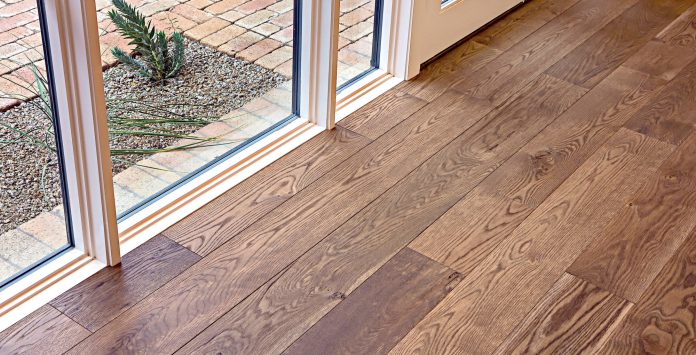Wood plank flooring is a timeless and elegant choice for any home, offering warmth, character, and durability. However, to keep your wood plank floors looking their best and ensure they last for years to come, proper maintenance and care are essential. This guide will provide you with everything you need to know about maintaining and caring for your wood plank floors.
Understanding Wood Plank Flooring
Before diving into the specifics of maintenance, it’s important to understand what wood plank flooring is and the different types available. Wood plank flooring consists of long, wide boards of natural wood. These planks can vary in width, length, and thickness, providing a variety of aesthetic options. There are several types of wood plank flooring, including:
- Solid Wood Planks: Made from a single piece of wood, these planks are known for their durability and can be sanded and refinished multiple times.
- Engineered Wood Planks: Composed of a top layer of real wood veneer bonded to layers of plywood or high-density fiberboard, engineered wood planks are more resistant to moisture and temperature changes.
Daily Care for Wood Plank Flooring
Sweeping and Dusting
Regular sweeping or dusting is crucial to prevent dirt and debris from scratching the surface of your wood plank flooring. Use a soft-bristle broom or a microfiber dust mop to gently remove dust and small particles. Avoid using stiff brooms or vacuums with beater bars, as these can damage the wood.
Vacuuming
Vacuuming once a week is beneficial for deeper cleaning. Ensure your vacuum cleaner is equipped with a hardwood floor setting, or use a vacuum designed specifically for hard floors. Avoid using vacuums with rotating brushes or beater bars that can scratch the floor.
Preventing Damage
Use Mats and Rugs
Place mats and rugs at entryways and high-traffic areas to capture dirt and moisture before they reach your wood plank floors. Ensure that the mats have non-slip backings to prevent slipping and protect your floors.
Furniture Pads
Attach felt or rubber pads to the bottom of furniture legs to prevent scratches and dents when moving furniture. Avoid dragging heavy furniture across the floor, as this can cause significant damage.
Control Indoor Climate
Wood plank flooring can expand and contract with changes in humidity and temperature. To maintain a consistent indoor climate, use a humidifier during dry seasons and an air conditioner or dehumidifier during humid seasons. Ideally, keep the indoor humidity level between 30% and 50%.
Cleaning Spills and Stains
Wipe Spills Immediately
To prevent moisture damage, wipe up spills as soon as they occur. Use a dry or slightly damp cloth to clean up liquids. Avoid using excessive water, as it can seep into the seams and cause the wood to swell.
Spot Cleaning
For stubborn stains, use a manufacturer-recommended wood floor cleaner. Apply the cleaner to a soft cloth and gently rub the stained area. Avoid using harsh chemicals, abrasive cleaners, or steam mops, as they can damage the finish of your wood plank flooring.
Deep Cleaning and Maintenance
Regular Mopping
Deep clean your wood plank floors periodically using a damp mop and a wood floor cleaner. Follow these steps for effective deep cleaning:
- Sweep or vacuum the floor to remove loose dirt and debris.
- Dilute the wood floor cleaner according to the manufacturer’s instructions.
- Dampen a microfiber mop with the cleaning solution, ensuring it is not overly wet.
- Mop the floor in the direction of the wood grain, avoiding excessive water.
- Dry the floor with a clean, dry cloth or towel to prevent water damage.
Re-Finishing
Over time, the finish on your wood plank flooring may wear down, making it more susceptible to damage. Depending on the type of finish and the level of wear, you may need to re-finish your floors every 5-10 years. This process involves sanding down the top layer of the wood and applying a new finish to restore its original beauty and protection.
Handling Common Issues
Scratches and Dents
Minor scratches and dents can be repaired with a wood touch-up kit that matches the color of your floor. For deeper scratches, consider using a wood filler or a professional repair service.
Cupping and Warping
Cupping (when the edges of the planks rise higher than the center) and warping (when the planks twist or bend) are usually caused by moisture issues. To address these problems, identify and eliminate the source of moisture, such as a leak or high humidity. In severe cases, you may need to replace the affected planks.
Seasonal Maintenance
Winter Care
During winter, use humidifiers to maintain optimal humidity levels and prevent the wood from drying out and shrinking. Avoid using salt or ice melt chemicals near your wood plank flooring, as they can cause damage.
Summer Care
In the summer, use air conditioning or dehumidifiers to control indoor humidity and prevent the wood from expanding. Ensure proper ventilation to avoid trapping moisture indoors.
Long-Term Preservation
Professional Cleaning and Maintenance
Consider hiring professional cleaning services every few years to deep clean and maintain your wood plank flooring. Professionals have specialized equipment and expertise to effectively clean and preserve the beauty of your floors.
Regular Inspections
Conduct regular inspections of your wood plank flooring to identify any signs of damage or wear early. Addressing issues promptly can prevent further damage and extend the life of your floors.
Conclusion
Proper maintenance and care are essential to preserve the beauty and longevity of your wood plank flooring. By following these guidelines, you can keep your floors looking their best for years to come. Regular cleaning, preventive measures, and timely repairs will ensure that your wood plank flooring remains a stunning and durable feature of your home. With the right care, your wood plank floors can continue to add warmth and elegance to your living space, enhancing the overall aesthetic and value of your home.












